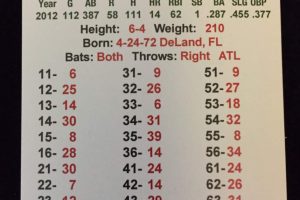
Baseball has been good to me. It gave me great enjoyment growing up, as I played it in backyards, little league fields, and through high school. After high school, it gave me money (and still enjoyment), first as a high school coach, and then as an umpire. Along the…
Continue reading

